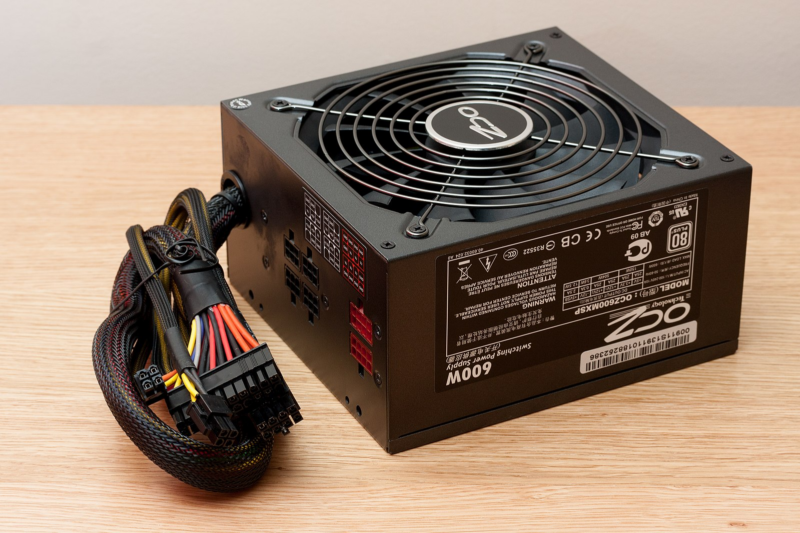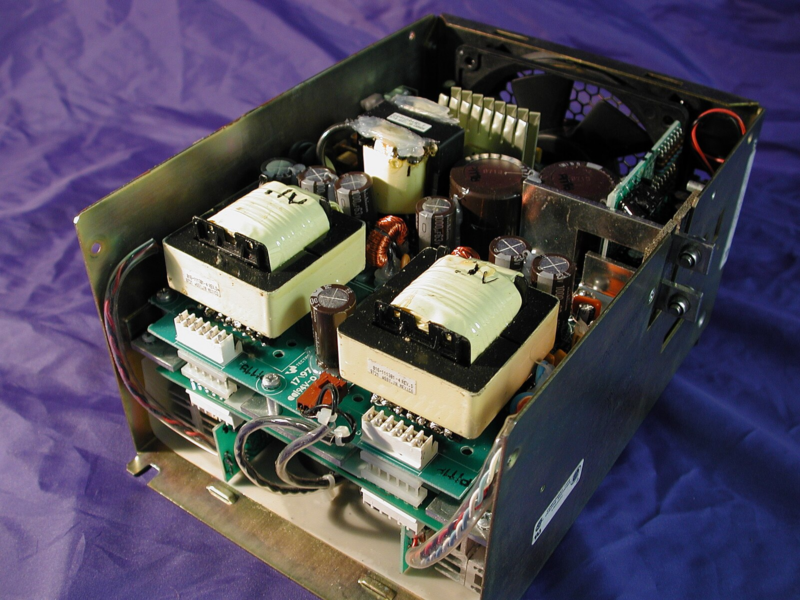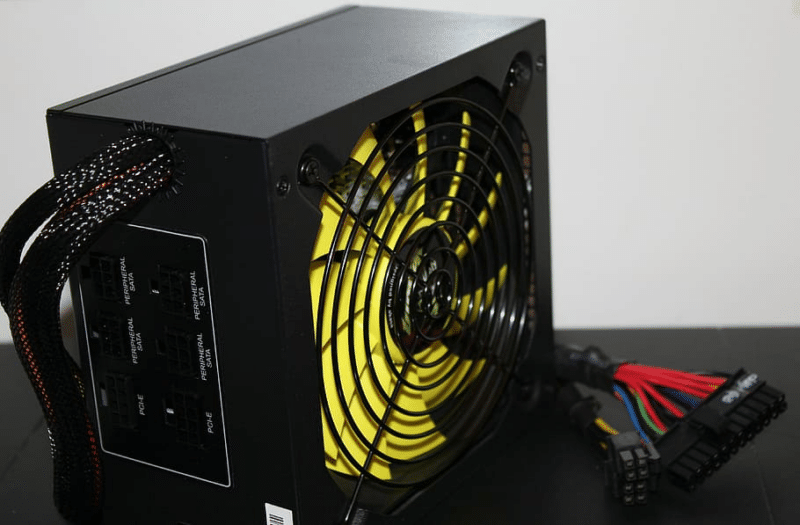In the heart of every high-performance PC, there sits an unsung hero working tirelessly to power the system’s components and operations – the power supply unit (PSU). Of the different types of power supplies available, one has gradually gained a reputation for its functionality and user-friendly design: the modular power supply.
This comprehensive guide is designed to shed light on the modular power supply – a component that not only adds to the aesthetics of your PC but also significantly improves its efficiency, flexibility, and cable management. Whether you’re an ardent gamer, a professional designer or just a tech enthusiast planning to build your own PC, understanding the concept and benefits of a modular power supply is essential to maximizing your machine’s potential.
So, let’s delve into the fascinating world of modular power supplies, exploring their features, benefits, and why they might be the right choice for your next PC build.
TABLE OF CONTENTS
Understanding Power Supply Units (PSUs)

At the heart of your computer’s operation lies the Power Supply Unit (PSU). Its primary function is to convert the Alternating Current (AC) supplied by your power outlet into Direct Current (DC). The DC current is the form of power that the different components of your computer can use. This conversion process is not always perfectly efficient, and the efficiency of your PSU—how well it transforms AC into DC—can be influenced by several factors.
The efficiency of a PSU can be influenced by load levels, or how much power the system is demanding at a given time. At certain load levels, a PSU may operate more or less efficiently. For instance, many PSUs have peak efficiency at 50% load.
The quality of the PSU itself also plays a significant role in its efficiency. Higher quality PSUs tend to have higher efficiency rates, making them more reliable and potentially longer-lasting.
Ambient temperature, or the temperature surrounding the PSU within your system, can also impact PSU efficiency. If the PSU becomes too hot, its ability to convert power effectively can degrade. This is why adequate cooling and ventilation within your system is crucial.
Understanding your system’s power requirements is paramount. It ensures that you supply just the right amount of power to all components, preventing any risk of damage due to excess power or inefficiency and potential system instability from insufficient power.
How to Determine Power Requirements
Determining your system’s power requirements can seem like a complex task, but there are tools to assist you. One such tool is a PSU calculator. This online tool helps you estimate the total power requirements of your system by taking into account the individual power needs of all your components. You simply input details about your system’s components, and the calculator gives you an estimated total power draw.
For a more accurate and real-time measure of power consumption, you can use a device called a “kill-a-watt” meter. This device measures the exact amount of power that your system is drawing from the outlet at any given time, providing a highly accurate measure of your system’s power use.
The Role of CPUs and GPUs
CPUs (Central Processing Units) and GPUs (Graphics Processing Units) are among the most power-demanding components in a computer system. With the rise of high-end, powerful CPUs and GPUs for tasks such as gaming and graphic design, the power draw of these components has become a significant consideration.
Modern high-end CPUs and GPUs can require substantial power, especially when under heavy load. In some cases, these components can experience power spikes—brief periods where the power draw significantly increases. It’s essential to account for these potential spikes when calculating total power requirements, as not doing so could lead to system instability or even shutdowns if the PSU can’t provide the necessary power.
Power Supply Form Factors
The form factor of a power supply refers to its physical size and shape, along with its mounting specifications. It is an essential consideration when building a computer, as it must align with the type of computer case and motherboard you are using.
The most common form factor for PSUs is ATX, suitable for most standard-sized desktops. However, there are several other form factors such as SFX and TFX, which are designed for smaller, more compact systems like mini-ITX builds.
Each form factor has its own specifications for size, mounting points, and even cable connectors. When choosing a PSU, it’s essential to know your system’s form factor to ensure compatibility and efficient use of space within your case. Misalignments in form factor can lead to installation issues or even physical damage to your components.
The Efficiency of Power Supplies

The efficiency of Power Supply Units (PSUs) lies at the core of their function. When we refer to PSU efficiency, we’re discussing the proportion of the incoming Alternating Current (AC) from your power outlet that the PSU successfully converts into Direct Current (DC) that your computer’s components can use.
PSU efficiency is a ratio: it compares the power output (DC) to the power input (AC). For instance, if a PSU has an efficiency of 80%, this means that 80% of the AC power drawn from the outlet is converted into usable DC power for your system, while the remaining 20% is lost, primarily as heat.
This efficiency is critically important because a less efficient PSU has to draw more power from your outlet to deliver the necessary power to your computer, leading to higher electricity usage and potentially higher costs. Additionally, since inefficiency is largely released as heat, a less efficient PSU can generate more heat, potentially impacting the thermal dynamics within your computer case and even shortening the lifespan of the PSU or other components.
To help consumers understand PSU efficiency, manufacturers often use a system of metal ratings: Bronze, Silver, Gold, Platinum, and Titanium. These ratings correspond to efficiency levels under typical load conditions, as follows:
- 80 Plus Bronze: 82% efficiency at 20% load, 85% efficiency at 50% load, 82% efficiency at 100% load.
- 80 Plus Silver: 85% efficiency at 20% load, 88% efficiency at 50% load, 85% efficiency at 100% load.
- 80 Plus Gold: 87% efficiency at 20% load, 90% efficiency at 50% load, 87% efficiency at 100% load.
- 80 Plus Platinum: 90% efficiency at 20% load, 92% efficiency at 50% load, 89% efficiency at 100% load.
- 80 Plus Titanium: 92% efficiency at 20% load, 94% efficiency at 50% load, 90% efficiency at 100% load.
Choosing a PSU with a higher efficiency rating can have multiple benefits. Besides the potential for cost savings on electricity, it also means less heat is generated, which could improve your computer’s thermal performance. Furthermore, by reducing electricity usage, you’re reducing your environmental impact, shrinking your system’s carbon footprint.
Understanding Modular Power Supplies

Modular power supplies represent a step forward in the evolution of computer hardware, providing an innovative approach to managing power distribution within your system. Unlike traditional non-modular power supplies, which feature a fixed set of cables permanently attached to the unit, modular power supplies allow for a more tailored approach. They provide the flexibility to connect only the cables you need, helping to reduce clutter and optimize space within your computer system.
Each cable in a modular power supply is detachable, which means you can connect specific cables based on your system’s requirements. If a particular cable isn’t needed for your current setup, you can simply leave it disconnected. This ability to customize your cable configuration can be a game-changer when it comes to the cleanliness and organization of your system’s interior.
Benefits of Modular Power Supplies
The advantages of using a modular power supply are numerous and extend beyond the immediately noticeable reduction in cable clutter. One of the main benefits is improved cable management. With fewer unnecessary cables in your system, it’s easier to route and manage the cables you do use, leading to a cleaner-looking build.
But the benefits of modular power supplies are not just aesthetic. Better cable management can also significantly improve airflow within your computer case. With fewer obstacles, air can circulate more freely, potentially leading to cooler operating temperatures for your components. Over time, this could help enhance the performance and extend the lifespan of your components.
Furthermore, modular power supplies streamline the setup and upgrade process. When building your system or adding new components, you can choose the exact cables you need and leave the rest. This not only reduces clutter during the building process but also makes it easier to add or remove components in the future as your needs change.
Choosing the Right Modular Power Supply

When it comes to choosing a modular power supply, several factors need to be considered. The first is wattage. This should be based on your system’s power requirements, with some overhead for potential future upgrades. However, remember that a higher-wattage power supply isn’t always better or more efficient—it’s more important that it meets your system’s power needs in an efficient and reliable manner.
The efficiency rating is another critical factor. As discussed previously, PSUs come with efficiency ratings, typically indicated by Bronze, Silver, Gold, Platinum, and Titanium certifications. The higher the rating, the more efficiently the PSU converts AC power to DC power, potentially leading to energy savings and less heat generation.
The form factor of the power supply is also crucial. It must be compatible with your case and motherboard. Make sure to check your case’s specifications to understand what PSU form factors it can accommodate.
Finally, consider the types and lengths of the cables that come with the PSU. Ensure that it has all the connections your components need, and the cables are long enough to reach your components comfortably. Some PSUs offer a variety of cable lengths to suit different case sizes and layouts.
Comparison: Fully Modular, Semi-Modular, and Non-Modular Power Supplies
When you’re in the market for a new power supply, one of the choices you’ll need to make is between fully modular, semi-modular, and non-modular models.
Fully Modular Power Supplies
Fully modular power supplies represent the epitome of flexibility and customization in the realm of PSUs. As the name suggests, every cable in a fully modular power supply is detachable. This means you have the freedom to use only the cables you need, which can significantly reduce clutter inside your computer case.
The benefits of a fully modular design are multi-faceted. First, less clutter means better airflow within the case, which can lead to improved cooling and potentially prolong the life of your components. Second, fully modular power supplies generally make the building process easier because you can connect cables to components without the PSU itself getting in the way. Lastly, a fully modular design can be more aesthetically pleasing, especially for builds with windowed cases where the interior is on display.
Semi-Modular Power Supplies
Semi-modular power supplies represent a middle ground between the fully modular and non-modular designs. In a semi-modular power supply, some cables are hardwired to the unit—typically the ones that power essential components like the motherboard and CPU. Additional connectors are provided for optional cables that power other components like drives and graphics cards.
Semi-modular power supplies strike a balance between flexibility and cost. They still offer a level of cable management and customization, as you can choose not to use unneeded cables. At the same time, because they have fewer detachable connections, they are typically less expensive than fully modular power supplies.
Non-Modular Power Supplies
Non-modular power supplies, also known as hard-wired or fixed power supplies, come with all cables permanently attached. This means you cannot remove any cables that are not in use.
The primary advantage of non-modular power supplies is their cost. They are typically the least expensive type of power supply, making them a popular choice for budget builds. However, they can contribute to clutter within the case because unused cables must be tucked away, potentially affecting airflow. Also, non-modular power supplies can make the building process slightly more cumbersome, as you have to manage all cables during installation.
Frequently Asked Questions
Here are some frequently asked questions related to power supplies.
Are modular power supplies more efficient than non-modular ones?
No, modular power supplies are not inherently more efficient than non-modular ones. Efficiency is determined by the PSU’s 80 Plus rating, not its modularity. Both modular and non-modular PSUs can have the same efficiency ratings.
Is a modular power supply necessary for my gaming PC?
While a modular power supply isn’t strictly necessary for a gaming PC, it’s often recommended due to benefits like improved cable management, better airflow, and easier upgrades. However, if budget is a significant concern, a non-modular or semi-modular power supply can be a viable option.
Conclusion
Understanding power supply units, and more specifically, modular power supplies, is crucial when building or upgrading computer systems. The PSU serves as the heart of your system, pumping necessary power to every component and setting the foundation for future enhancements. Whether you choose a fully modular, semi-modular, or non-modular power supply, remember to always evaluate your specific needs and take into account the power requirements of your system. By doing so, you’re ensuring the vitality and longevity of your computer.
